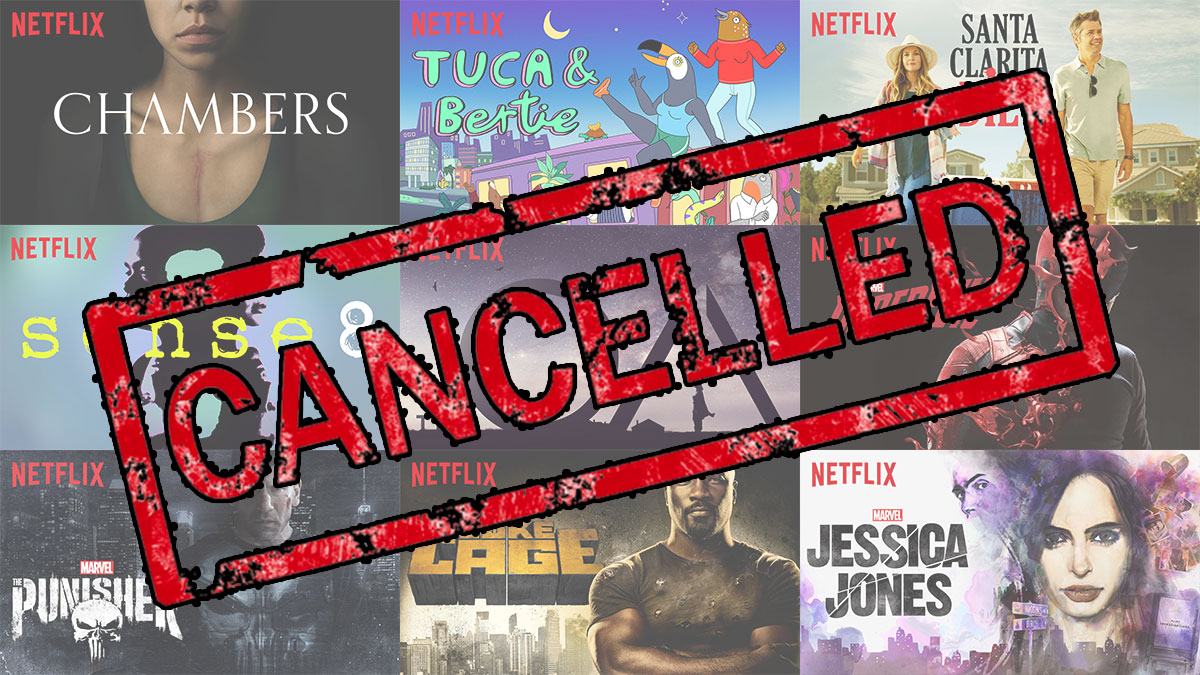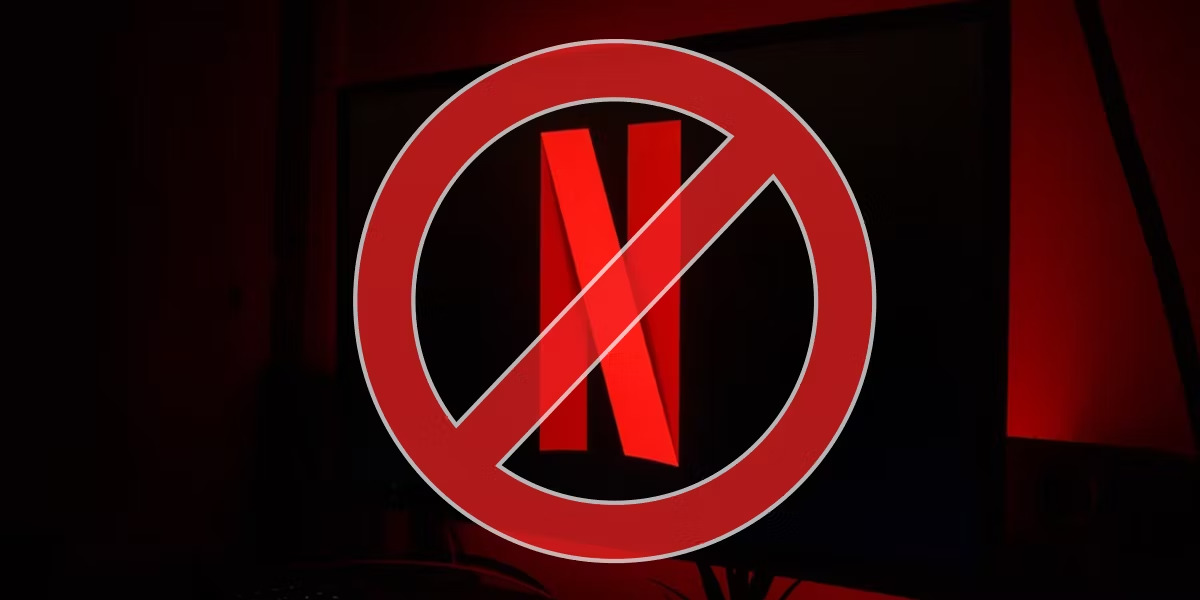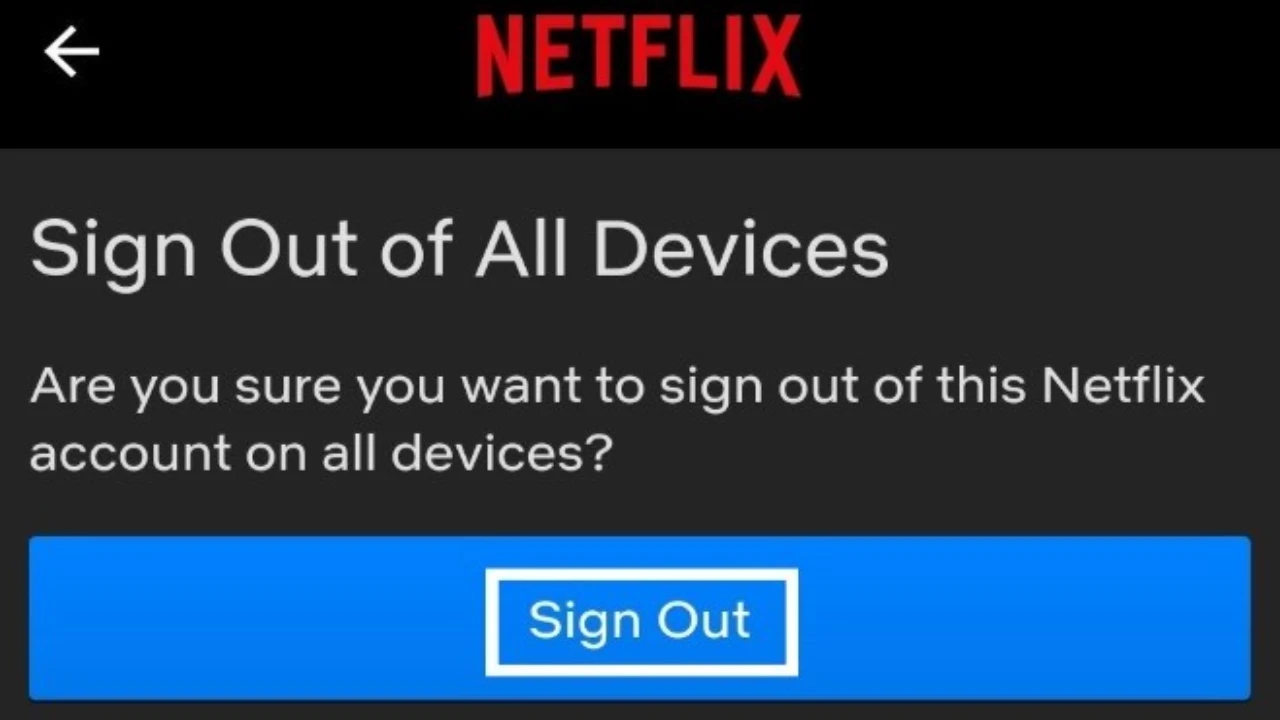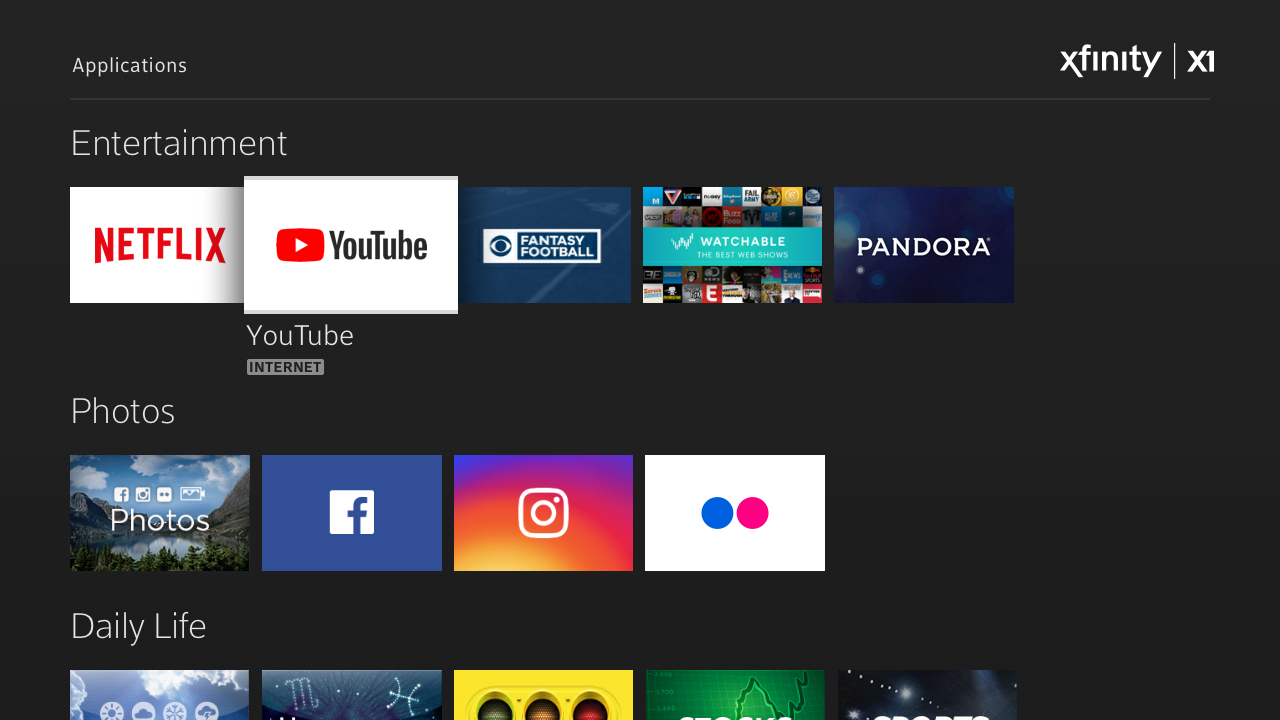Introduction
Netflix, the popular streaming platform, is known for producing and showcasing a wide range of original content. From gripping dramas to captivating documentaries and binge-worthy series, Netflix has captured the attention of millions of viewers worldwide. However, despite its success, there is a recurring phenomenon that leaves many viewers puzzled and disappointed – the cancellation of beloved shows.
Netflix’s decision to cancel shows that have gained a loyal following has sparked outrage among fans. The abrupt discontinuation of these shows has led to speculation and numerous theories as to why Netflix seemingly cancels good shows. While there is no one-size-fits-all explanation, several factors contribute to this disheartening trend.
Before delving into the reasons behind Netflix’s cancellations, it is important to note that the platform operates in a highly competitive and ever-evolving industry. With the rise of other streaming services, such as Amazon Prime Video and Hulu, as well as the entry of established networks into the streaming market, Netflix faces intense competition in capturing and retaining viewership.
In order to understand why Netflix cancels good shows, we must explore the various factors at play. These include:
Lack of viewership
One of the primary reasons Netflix cancels good shows is due to a lack of viewership. While a show may receive critical acclaim and possess a dedicated fan base, if it fails to attract a substantial number of viewers, it becomes financially unsustainable for the streaming giant.
Netflix relies on data-driven decision-making, closely monitoring viewership metrics to assess the popularity and success of their shows. They analyze factors such as the number of viewers, duration of viewing sessions, and user engagement to determine if a show is resonating with the audience.
When a show fails to generate the desired viewership numbers, it becomes economically unviable for Netflix to continue production. The streaming platform allocates significant resources to produce original content, and if a show is not attracting enough viewers, it becomes a poor investment.
In some cases, even if a show begins with a strong viewership, it may dwindle over time. Netflix evaluates the ongoing viewership trend and makes decisions based on its projections for future performance. If a show’s viewership declines rapidly or consistently fails to meet expectations, it becomes vulnerable to cancellation.
It’s important to note that the measure of viewership is not solely based on traditional ratings systems but also on the global subscriber base of Netflix. The platform considers viewership from different regions and demographics, taking into account the diversity of its user base. Therefore, a show’s performance is evaluated on a broader scale, considering its appeal to a wide range of audiences.
While a lack of viewership may be disheartening for fans, it is crucial from a business standpoint. Netflix must maintain a balance between providing quality content and ensuring that the shows they invest in are financially viable.
Next, we will explore another factor contributing to the cancellation of good shows – high production costs.
High production costs
Another significant factor that leads to the cancellation of good shows on Netflix is the high production costs associated with creating original content. Producing high-quality shows involves expenses such as hiring a talented cast and crew, securing filming locations, creating elaborate sets and costumes, and executing complex visual effects.
Netflix prides itself on delivering visually stunning and masterfully crafted shows. However, maintaining this level of production quality comes at a steep price. Some shows, despite having a dedicated fan base, may not generate enough revenue to justify the substantial investment required for their production.
In some cases, the production costs of a show may exceed the revenue it generates. This imbalance makes it economically impractical for Netflix to continue funding the series, ultimately leading to its cancellation.
Additionally, the cost of licensing and renewing the rights to certain intellectual properties can also contribute to high production costs. Some shows on Netflix are adaptations of popular books, comics, or existing franchises, requiring the payment of substantial licensing fees. If the expenses related to licensing become prohibitively high and the show does not attract enough viewers to justify the investment, Netflix may opt to cancel it.
Furthermore, producing a show with a large ensemble cast or extravagant production design can significantly inflate the budget. While these elements may contribute to the show’s appeal, they also escalate the costs involved. If a show fails to generate the desired viewership and revenue, the financial burden becomes unsustainable for Netflix.
It is important to understand that the decision to cancel a show due to high production costs is not indicative of its quality or popularity. Even critically acclaimed shows may face cancellation if their financial viability is compromised.
Next, let’s explore how evolving content preferences influence the cancellation of good shows on Netflix.
Evolving content preferences
One of the reasons why Netflix cancels good shows is the ever-changing landscape of content preferences among viewers. As audience tastes and trends evolve, the streaming platform must adapt to stay relevant and cater to the shifting demands of its user base.
Netflix invests heavily in data analysis, continuously monitoring viewer behavior and preferences. They use this data to identify emerging trends and make informed decisions about the types of shows to produce and promote. If a show fails to align with the current content preferences, it may struggle to attract and retain viewers, ultimately leading to cancellation.
Viewers’ interests and preferences can change rapidly, driven by factors such as societal shifts, cultural movements, and emerging genres. What may have once been a popular genre or storytelling style may lose its appeal over time. Netflix must stay attuned to these shifting preferences and make adjustments to their content lineup accordingly.
Furthermore, competition plays a crucial role in shaping content preferences. As other streaming services and traditional networks enter the market, viewers are presented with an abundance of options. This increased competition for viewership drives the need for Netflix to deliver fresh and innovative content that stands out.
Part of the challenge lies in striking a balance between catering to established viewer preferences and taking risks with new and exciting storytelling. Netflix aims to provide a diverse range of content that appeals to a broad audience. However, this also means that some shows may be phased out or canceled to make room for new and potentially more popular content.
It’s important to note that while a show may be well-received by critics and a dedicated fan base, it doesn’t always guarantee long-term success. Adaptability and responsiveness to evolving content preferences are key considerations for Netflix when making decisions about renewing or canceling shows.
Next, we will explore another aspect that can contribute to the cancellation of good shows – market saturation.
Market saturation
Market saturation is a significant factor contributing to the cancellation of good shows on Netflix. With the rise of numerous streaming platforms and the influx of original content, the market has become saturated with an abundance of shows vying for viewers’ attention.
As more and more shows are produced and released on various platforms, viewers have a seemingly endless array of choices. This oversaturation makes it increasingly challenging for any one particular show to stand out and attract a substantial audience.
Netflix operates in a highly competitive industry, where other streaming services and traditional networks are also vying for viewership. In order to maintain their competitive edge, Netflix must continuously introduce new content and capture the interest of subscribers.
While good shows may receive critical acclaim and have a dedicated fan base, they can get lost in the sea of options available to viewers. This oversaturation of the market can lead to a decrease in viewership for even the most well-received shows, resulting in their cancellation.
Another aspect of market saturation is the limited capacity for viewers’ attention. With a finite amount of time available to watch shows, viewers have to make choices about what to watch. This means that there is a limited window of opportunity for a show to capture and retain viewers, leading to a tighter competition among shows.
Netflix needs to regularly refresh its content library to maintain subscriber engagement. While this approach ensures a steady stream of new shows and movies, it also places pressure on existing shows to perform well and keep up with ever-increasing expectations.
In a saturated market, it becomes more challenging for good shows to break through and gain the traction they need to sustain their run. This, combined with the need for fresh content, can result in the cancellation of shows that may have a loyal fan base but are unable to attract a wider audience.
Next, we will explore another factor that plays a role in the cancellation of good shows – licensing and distribution issues.
Licensing and distribution issues
Licensing and distribution issues often contribute to the cancellation of good shows on Netflix. Securing the rights to stream content can be a complex process, and certain contractual agreements or complications can arise that result in the cancellation of a show.
Netflix frequently acquires the rights to stream shows from various production studios and networks. However, these licensing agreements may come with limitations or restrictions. For example, a show may only have the rights to be streamed for a limited period of time or within specific regions.
If Netflix is unable to renegotiate or extend these licensing agreements, they may be forced to cancel a show once the current contract expires. Despite a show’s popularity and fan base, the platform’s hands may be tied due to these contractual limitations.
Additionally, distribution issues can also arise when a show is co-produced with other networks or production companies. If there are disagreements or complications regarding the distribution rights or revenue-sharing arrangements, it can hinder the continuation of the show.
In some cases, a show may have been acquired by Netflix from another network or streaming platform. However, if the show’s rights are subsequently revoked or reclaimed by the original owner, Netflix may be forced to cancel the show due to the loss of streaming rights.
Moreover, changes in the strategic direction or business priorities of the production studio or network can also impact the availability of a show on Netflix. If the studio or network decides to prioritize their own streaming platform or enter exclusive partnerships with other services, it can result in the cancellation of the show on Netflix.
Licensing and distribution issues are complex and often involve multiple parties and financial considerations. Despite a show’s popularity or critical acclaim, if these issues cannot be resolved, it can lead to its cancellation on Netflix.
Next, we will explore another factor that can contribute to the cancellation of good shows – contractual disagreements.
Contractual agreements
Contractual agreements play a significant role in the cancellation of good shows on Netflix. These agreements govern the terms and conditions under which a show is produced and distributed, and any disputes or disagreements that arise can result in the show’s cancellation.
Netflix enters into contractual agreements with production studios, networks, and show creators to bring original content to its platform. These agreements outline various aspects, such as the duration of the show, the number of seasons planned, and the financial arrangements between the parties involved.
However, contractual disagreements can arise during the production or post-production phase, leading to uncertainty and potential cancellation. These disagreements can revolve around creative differences, financial disputes, or conflicting visions for the direction of the show.
For example, if there are disagreements between the show creators and Netflix regarding the creative direction or quality of the show, it can result in creative clashes that cannot be resolved. In such cases, Netflix may decide to cancel the show rather than compromise on its creative vision.
Financial disagreements can also arise if the production costs exceed the agreed-upon budget or if there are disputes over revenue sharing. If the parties involved are unable to come to a satisfactory resolution, the show may be canceled due to the financial strain it imposes.
In certain instances, contractual agreements may have specific performance metrics or milestones that the show needs to meet. If the show fails to meet these expectations, Netflix may have the option to cancel the show based on the terms outlined in the contract.
Contractual agreements also outline the rights and ownership of the show. If there are disputes over intellectual property rights or if a show’s ownership changes hands, it can lead to complications that result in the show’s cancellation.
It’s important to note that contractual agreements are legally binding and can have a significant impact on the fate of a show. If the terms of the contract cannot be met or if disputes cannot be resolved, Netflix may have no choice but to cancel the show.
Next, let’s explore another factor that can contribute to the cancellation of good shows – creative differences.
Creative differences
Creative differences often emerge as a factor contributing to the cancellation of good shows on Netflix. When multiple parties collaborate on a show, including writers, directors, producers, and actors, it’s not uncommon for divergent creative visions to arise.
Netflix strives to deliver high-quality and innovative content that resonates with its audience. However, clashes in creative direction and disagreements about the artistic direction of a show can lead to its cancellation.
These creative differences can occur at various stages of the production process. Show creators may have a specific vision for the storytelling, character development, or overall tone of the show, while Netflix may have its own expectations and preferences to meet the demands of its viewers.
If the creative teams and executives at Netflix disagree on the direction the show should take, it can lead to a stalemate. Resolving these creative differences may prove difficult, ultimately resulting in the cancellation of the show.
Furthermore, creative conflicts can also arise between the show creators and the talent involved in the production. Disagreements regarding character arcs, script changes, or on-set dynamics can impact the overall creative process and hinder the smooth production of the show.
In some cases, changes in the show’s creative team, such as the departure of key writers or directors, can disrupt the creative vision and cause conflicts. When the replacement team fails to align with the original vision or fails to meet the expectations of Netflix, it can lead to the cancellation of the show.
Creative differences can also stem from external pressures. For example, if a show tackles controversial or sensitive subject matter, there may be disagreements about the appropriate portrayal or handling of the content. If a compromise cannot be reached, it can result in the show’s cancellation.
While creative differences can be disheartening for fans who have become invested in a show, it highlights the importance of maintaining a cohesive and aligned creative vision throughout the production process.
Next, let’s explore how viewer backlash or controversy can influence the cancellation of good shows on Netflix.
Viewer backlash or controversy
Viewer backlash or controversy surrounding a show can be a significant factor in the decision to cancel it on Netflix. In an age of social media and online platforms where opinions can be easily shared and amplified, public sentiment and reactions can have a powerful impact.
When a show generates significant backlash or controversy, it can create a negative image for Netflix and potentially harm its reputation. The streaming platform may opt to cancel the show to distance itself from the controversy and avoid further repercussions.
Viewer backlash can stem from various reasons, including objectionable content, misrepresentation of certain groups, or insensitive portrayals. If a show receives widespread criticism and faces public outrage, Netflix may choose to terminate it to mitigate the damage and demonstrate a commitment to addressing public concerns.
Controversial shows can also face boycotts or calls for cancellation from activist groups or online communities. This can create a significant impact on viewership and public perception, prompting Netflix to make the decision to cancel the show in response to these concerns.
While viewer backlash and controversy can influence the cancellation of a show, it is essential to differentiate between legitimate concerns and knee-jerk reactions. Netflix takes into account the opinions and feedback of its viewers but must also weigh the long-term implications and make decisions that align with its broader content strategy.
It is worth noting that viewer feedback can also have a positive impact, prompting Netflix to renew or reevaluate the future of a show. Dedicated fan campaigns, petitions, and vocal support can sometimes influence the decision to continue a show despite initial plans for cancellation.
The influence of viewer backlash and controversy underscores the importance of creating content that resonates with diverse audiences and avoids causing undue offense or harm. By actively engaging with and listening to viewer feedback, Netflix aims to strike a delicate balance between creative expression and responsible content creation.
In the final section, we will summarize the key factors discussed in relation to the cancellation of good shows on Netflix.
Conclusion
The cancellation of good shows on Netflix can be attributed to a combination of factors. While it is disappointing for fans to see their favorite shows discontinued, it is crucial to understand the complexities and considerations that go into these decisions.
Lack of viewership plays a significant role, as Netflix relies on data-driven metrics to assess the popularity and financial viability of its shows. High production costs, including licensing fees, can result in the cancellation of shows that may have a dedicated fan base but struggle to generate enough revenue to sustain their production.
Evolving content preferences and market saturation also influence the fate of shows. As viewer tastes change and competition for viewership intensifies, Netflix must adapt and provide fresh, relevant content to maintain its position in the market.
Contractual agreements, including licensing and distribution issues, and creative differences among the production teams and talent are additional factors that can lead to cancellations. These factors are often beyond the control of Netflix and may result in the loss of streaming rights or the inability to align creative visions.
Furthermore, viewer backlash or controversy surrounding a show can prompt Netflix to cancel it to avoid reputational damage and respond to public concerns. However, viewer feedback can also have a positive impact, as dedicated fan campaigns and support can influence decisions to renew or reevaluate shows slated for cancellation.
Understanding these factors sheds light on the complexity of decision-making in the entertainment industry. While the cancellation of good shows can be disheartening for fans, it underscores Netflix’s commitment to providing a diverse range of content that resonates with its audience while navigating intricate business considerations.
As the streaming landscape continues to evolve, Netflix and other platforms will inevitably face both successes and disappointments in their quest to deliver compelling and engaging content to viewers worldwide.

























